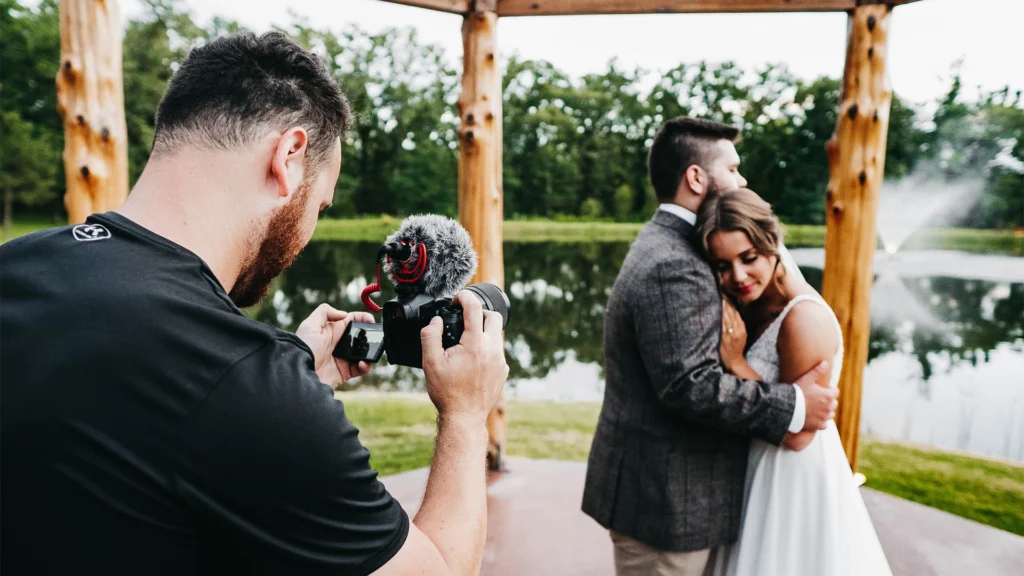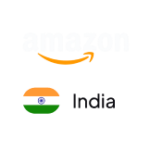If the idea of shooting different places and gatherings intrigues you, then it’s time to try your hand at event photography. It entices many photographers and offers many options to experiment with different settings, ensuring you never get bored. Furthermore, event photographers are in high demand and necessary for almost every large and organized gathering. Event photographers stay busy throughout the year as events are recurring, leaving no room for an off-season.
Whether you’re a beginner event photographer or an event organizer, this blog post will guide you through all the details to kickstart your career or make the necessary photography arrangements for your upcoming event.
Let’s get started!
What Is Event Photography
In event photography, photographers capture professional pictures at large gatherings, whether they are on professional or personal occasions. The main task of this type of photography is to capture memorable moments from the event. Photographers skillfully navigate the event, capturing candid moments, emotions, and interactions that contribute to a comprehensive visual narrative of the occasion. With their keen eye and technical expertise, photographers create a timeless collection of images.

Event photography is a fun and challenging endeavor. It is not as simple as indoor photography, where photographers can control multiple aspects to obtain a perfect picture. Instead, it relies on the unique skills of the photographer within a photography studio or on-location, where they manage to capture the perfect shot despite the lack of control.
List Testing
- list 12 spontaneity, snapping th
- list 2 sadas ushdajnsa
- list 3 tetsing lorem ipsum
Additionally, this is more about spontaneity, snapping the candids, and making the moments memorable forever instead of getting a calculated shot. Though an event photographer needs to be calculated while snapping the pictures, it requires more of the presence of mind to identify a perfect opportunity for a perfect picture.
Different Types Of Event Photography
Event photography necessitates the presence of photographers at various types of large gatherings. It encompasses a wide range of events, including but not limited to weddings, corporate seminars, conferences, trade shows, music concerts, sports tournaments, charity events, galas, and cultural festivals. These photographers are responsible for capturing the essence and moments of these diverse occasions, ensuring that the event is documented and the memories are preserved for years to come.
This article aims to provide a comprehensive overview of the various types of photography. By delving into these categories, you will gain a more detailed understanding of the diverse range of subjects and settings that it can encompass.
Wedding photography
Wedding photography is the most popular form of event photography, though it is also the trickiest. A wedding requires capturing snaps of multiple ceremonies during the wedding, pre-wedding, and sometimes post-wedding.

The majority of the shots at a wedding are one-time shots. The photographer needs to perfect them in one go to capture the moment. Wedding photography requires regularly analyzing the venue to ensure no important events go uncaptured.
Corporate photography
Any business or corporate events for staff, clients, or partners, such as conferences, seminars, conventions, parties, etc., will fall under corporate photography. Corporate events occur regularly, and every event needs to be captured for record and promotion purposes.
Festival photography
Festivals represent culture and are celebrated at a grand level. Sometimes society organizes festival celebrations at a grand level, whereas sometimes, people host private festival parties. Whatever the case, the mass gathering for celebrating festivals makes festival photography a popular event photography choice.
Sports photography
Another popular event photography is sports photography. Here, the photographers must capture the complete game, such as hockey, cricket, football, golf, etc., without missing any details.

Sports photographers cannot be present on the main field; they are generally present on the sidelines. To ensure the perfect sports images, photographers require multiple high-quality tools such as different lenses, camera models, etc., even from the sidelines.
Award shows photography
Award shows are regular occurrences and are always the talk of the town. They are also great opportunities for photographers to showcase their skills and build connections. A photographer requires high-quality tools and unique skills to pull stunning award-show snaps. Since lightning is not always bright and events are always in motion, a photographer must be quick without missing any important occurrence.
Private events photography
Event photographers are essential in capturing moments during private events such as birthday parties, anniversary parties, bachelor parties, and family reunions. These events can range from small-scale gatherings to grand celebrations. The key to stunning photography in commercial photography for private events is actively clicking snaps without missing occurrences while being fully aware of the surroundings.
Concerts or Shows photography
Various musical concerts, dance shows, cultural events, theater performances, etc., occur that require event photographers to capture the events. Concert or show photography requires photographers to capture the show, audience, backstage moments, and different tools for capturing the snaps. Additionally, photographers must ensure they get perfect snaps without disturbing the audience during concert photography.
Product launches or start-ups
Photographers strategize while capturing images at product launches and start-ups since the major concern of these events revolves around product photography. Large gatherings can interfere with obtaining perfect product shots, and lighting conditions may not always be suitable for capturing quality pictures. Therefore, photographers must carry multiple tools to ensure they achieve the perfect snaps and effectively highlight the products.
Photography at Press events
National or international events in the interest of nations or the world, such as public announcements, leaders’ meetings, press conferences, etc., are also a form of event photoshoots. A photographer needs to be prepared with multiple tools to ensure that none of the occurrences are left uncaptured.
Educational event photography
Educational places such as schools, colleges, or universities host multiple events such as annual fest, cultural programs, meeting with authorities, etc. These events are captured for record and promotion purposes, as well as for memory purposes.
How To Get Started Shooting Event Photos
Getting started with shooting event photos can be challenging, as landing your first gig in this competitive field can be tough. However, securing that initial opportunity is all an aspiring event photographer needs to kickstart their career. To build a solid foundation in event photography, a tutorial or guide that covers the fundamentals of the genre can be immensely helpful. When starting to shoot event photos, there are certain key considerations to keep in mind, such as:
Event photography equipment and gear
When photographing events, there are several difficulties to deal with, such as poor lighting, protracted activities, etc. On a shoot day, specific photographic equipment and gear are necessary to understand how to do event photoshoots and handle its event issues.

Event photographers carefully select and carry these equipment and gears to ensure they are fully equipped to capture the best moments and produce high-quality photographs during any event they cover. The following equipments are required:
- Li tag checker
- Li tag checker 2
- Lenses
The lens choice will depend on the type of event a photographer is capturing. The event could be a small or large indoor or field event. Low-light events will require different lenses than brightly lit field events. - Diffuser
Carry a flash diffuser to soften light and eliminate harshness in event photos. It’s not always necessary, but a precaution worth taking. - Batteries
Ensuring a reliable power source throughout an event that can last for hours is crucial for event photographers. To avoid encountering dead or damaged batteries during critical moments, it is imperative to prioritize using a durable and long-life battery.
We highly recommend carrying extra batteries to ensure a readily available backup power supply.This precautionary measure offers an extra layer of security, assuring photographers that they can seamlessly continue capturing important moments without interruptions caused by depleted batteries. - Flash
Using the in-built camera flash is a suitable option. However, the better option will be to carry and use other better external flash accessories for extra clarity and sharp pictures. - Storage devices
Another important piece of photography equipment for an event shoot is a storage device such as memory, SD, or flash cards. Overshoot is possible during events.
Event Photography Pricing
Another important aspect to consider while starting event photography is the event it’s pricing. Initial gigs are generally less paid than later gigs when you are an experienced photographer. Further, there are chances that initially, you have to work at a relatively low price or even for free to get some projects and build your portfolio. For instance, experienced photographers may charge up to $250 for an hour, whereas a novel photographer may charge up to $100 or less, again for an hour.
Additionally, pricing can vary according to situations and conditions. Clients pay different prices for various events, with weddings being paid for in full and conferences being paid on an hourly basis. You can also set the pricing on a half-day or quarterly basis with fixed hours. Small-scale events are generally less expensive as compared to grand-scale events.
Event Photography Tips And Tricks
Event photographers can optimize their photography skills by implementing useful tips and tricks that streamline their workflow. Here are some valuable tips and tricks for event photoshoots: plan shots carefully in advance, leverage natural light for optimal results, capture candid moments, engage with attendees, utilize fast lenses and adjust camera settings for low-light conditions, and maintain backups of essential equipment.
1) Preparation
Advanced preparation involves clarifying the objectives and needs of the event with the client, clearing the schedule for the event day, identifying the equipment required, preparing the equipment, preparing the toolbox with all needed equipment and gear, etc.
2) Pre-event shoot
The pre-event shoot is important to depict the complete event story. Ensure you reach the venue early and click some snaps before the event begins.
3) Avoid undershooting
It’s better to click extra pictures than to click fewer pictures of the event. Extra pictures will ensure you get a perfect snap, and you can choose the best snap for delivering to the client.
4) Checklist of key shots
Ensure you snap specific shots that clients express as important and that you cannot afford to miss during an event.
5) Image format
Ensure you click images in the RAW format, as it provides flexibility with editing images. RAW format is suitable as it provides a broad and dynamic color spectrum range that is handy in post-processing images.
6) Post-processing
Ensure you edit and modify all the images before delivering them to the client to bring consistency and clarity to the images.
7) Photo-editing companies
Another wise option to get perfect images is to associate with an image-editing company, such as Spyne, that uses AI technology to make images sharper, clearer, and high-quality. It will help impress the client and surely get you more photography projects.
Clear client communication and equipment readiness is crucial for advanced preparation. Conducting pre-event shoots captures the complete event story. Avoiding undershooting provides more high-quality images. Key shot checklists minimize the risk of missing important moments. Shooting in RAW format allows post-processing flexibility.
How To Edit Event Photographs
Editing the event photographs is a must before handing over the photographs to the client. Editing the images helps to bring the best out of the image, adds value to the images, and helps to reflect the key features of the image. event photographers can ensure their images are polished and visually appealing, leaving a lasting impression on clients. Ensure to go through the following editing steps to get perfect snaps-
1) Cropping
Enhance the main content of the image by removing unnecessary sides through precise cropping techniques.
2) Exposure
Correct over-exposed highlights caused by camera sensors to maintain a consistent exposure throughout the image. Ensure to get rid of extra highlights and bring consistency to the images.
3) Brightness
Enhance dull or dim photos by adjusting the brightness, bringing clarity and vibrancy to the image.
4) Color correction
Ensure to neutralize or minimize the color differences in the image before handing over the image to the client.
5) Contrast
Bring consistency to the image by fixing the color contrast in the image. Experiment with the high contrast and low contrast color and tone of the image to identify the better version of the image.
6) Tint
Adding the necessary color or tint in the images to make them look visually appealing is a necessary part of post-processing.
7) Sharpening
Clearly define the edges of the images by adjusting the level of sharpening in the image.
Event photographers can enhance their post-processing techniques to improve the overall quality of their images.
8) Composition
Composition is all the visual elements present in an image. Ensure the focus is on the main element and the composition does not distract the viewers from the main content.
Editing the snaps is a significant step in this genre. You can edit the images using photo editing software or partner with companies like Spyne to obtain high-quality edited images
Conclusion
In conclusion, event photography offers a thrilling and diverse career path for photographers looking to capture memorable moments at large gatherings. From weddings to corporate events, festivals to sports tournaments, there are numerous opportunities to explore and showcase your skills. Prepare yourself with the right equipment, understand the different types of events, and hone your post-processing techniques to unlock the key to success.
Follow tips, collaborate with photo-editing companies, master editing, and capture impactful images. Embrace the excitement of photography, create unforgettable moments, and preserve lasting memories.




























